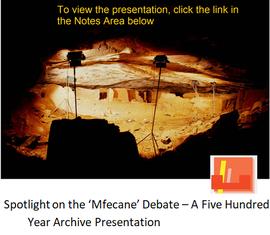[Source - Carolyn Hamilton for FHYA, 2019: Leibhammer made the selection for the FHYA with the following considerations in mind: objects had to have been made in the 19th or early 20th centuries and had to have come from the KwaZulu-Natal region. Leibhammer also made sure to select a range of donors that included anthropologists, female collectors, and military or colonial officials. She ensured that the selection included a range of genre, such as carved wooden objects, metal and beadwork items. She also selected objects where she knew of the existence of similar objects in other collections that were likely to throw light on the objects at MMA. She thus relied in part on information gleaned from the MAA accession records and in part on her own knowledge of the field.
[Source - Chloe Rushovich for FHYA using Nessa Leibhammer and Rachel Hand’s notes, 2017: Rachel Hand, the Collections Manager for Anthropology at the Museum of Archaeology and Anthropology at the University of Cambridge, along with Nessa Leibhammer for the FHYA, searched the MAA online database for all the items in the MAA collection that were labelled ‘Zulu’; ‘Natal’; ‘Zululand’; ‘KwaZulu-Natal’; and the term at the time for the inhabitants of southern Natal and the Northern Cape, [K-word]. Hand found the relevant material in MAA’s 3 stores. Leibhammer then manually combed through the Southern African card drawer and photographed the related catalogue cards, Accession Registers, and Annual Reports. During this process, Leibhammer narrowed the number of items for FHYA consideration from the 461 items initially identified to 75 items. The FHYA selection is co-terminus with Leibhammer’s selection.
The FHYA is also concerned with the archival material associated with historical objects, such as notes, catalogue cards, labels, accession registers, and annual reports. This material is a part of the history of both the museum and the object. MAA used catalogue cards to add additional object information from the very first accessions back in 1884 and replacement cards were made if the original was lost- usually using both different pens, and terms. Original sale or collector labels were sometimes stuck to the cards to add biographical layers of information, as well as letters, and, later, photographs. Staff and sometimes visitors, would add comments on provenances, measurements and locations over time. Reconnecting an author with their annotations can add to knowledge of the object’s history and associations. The era and author of the cards also is reflected in their physical aspects: initially details were handwritten in ink, the 1930s saw cards stamped and written on a typewriter, followed variously by handwritten details in ballpoint pen, finally moving to word-processed and laser printed texts. Like the cards the physical type of paper and pen used can suggest dates as well as authors. They can be used to confirm the identity of misplaced objects, e.g. Henry Bulwer’s collection bears distinctive long, rectangular shaped paper labels and his cursive script. Early labels were handwritten in ink, on small rectangular paper or parchment label and tied through small metal reinforced holes. Others were glued directly to the object. Smaller rectangular or square paper labels, with a printed outline, usually stuck directly to the object, usually originate in late nineteenth or early twentieth century salerooms or via a collector. Larger circular, metal-edged labels were written in the museum, probably from the 1970s onwards. The 1980s brought larger labels on thick yellow paper and remained handwritten. From c.2000, MAA has used acid-free yellowish paper labels, that are written on in light-sensitive and waterproof ink. The FHYA organized this material into ‘series’, with each series being named after the primary collector of the material.]

